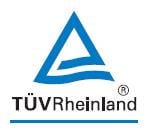
Management systems for Occupational Health and Safety (OHSMS) have been proven to organise and focus a company's efforts for minimising work-related hazards. The OHSAS Project Group published the first edition of OHSAS 18001 in 1999, and it was quickly adopted on the national level.
Today, over 120 countries are implementing their own OHSMS standards, most based on OHSAS 18001. The ISO recognised the need for an international standard, and work began on ISO 45001.
The new ISO occupational health and safety standard was published on 12 March 2018.

ISO 45001:2018 is a completely new standard and will replace and supersede OHSAS 18001. Organisations will have a three-year transition period for conversion to ISO 45001.
All OHSAS 18001:2007 certifications issued during the migration will expire at the end of the transition period.
What’s New with ISO 45001:2018
The updated international standard focuses on preventative employee protection and greater involvement from the management team. Combining the Plan-Do-Check-Act (PDCA) model with a risk-based approach, ISO 45001:2018 offers organisations the management tools to reduce workplace hazards and to improve the overall health and wellness of employees.
More importantly, the universal design and alignment with other ISO management system standards allows for easier integration into an organisation’s existing business management system or environmental management system. ISO 45001:2018 is adaptable and will provide the necessary flexibility for all organisations, regardless of their size, organisational structure, industry, or sector.
By following a systematic standard for your occupational health & safety protection according to ISO 45001:2018, risks can be identified, eliminated and/or minimised, before they can become hazards.
|
Key Amendments |
|
By complying to ISO 45001:2018, companies are able to:
- Demonstrate commitment to health and safety with an internationally recognised certificate, securing a competitive advantage
- Increase safety awareness and motivation among employees
- Systematically reduce of occupational accidents
- Reduce downtime and disruption to production
- Improve your brand image among clients, authorities, and investors
- Align with ISO 9001:2015 requirements, making it easier to get certified to other quality management system standards in the future
Transitioning from OHSAS 18001:2007
The International Accreditation Forum (IAF) recommends that organisations currently using OHSAS 18001:2007 should take the following actions to begin the transition to ISO 45001:2018:
- Obtain a copy of ISO 45001
- Identify the gaps in their OHSMS which need to be addressed to meet new requirements
- Develop an implementation plan
- Ensure that new competence needs are met and create awareness for all parties that have an impact on the effectiveness of the OHSMS
- Update the existing OHSMS to meet the new requirements and provide verification of its effectiveness
- Liaise with their Certification Body for migration arrangements where applicable
Read more about How to Prepare Your Company for the Transition to Iso 45001:2018 and 9 Things You Should Know About the New Occupational Health and Safety Standard.
As of now, it is still possible to obtain and implement OHSAS 18001 certifications. However, organisations are strongly encouraged to become familiar with the requirements of ISO 45001, as the occupational health and safety standard must be implemented by March 2021.
For more information, speak with our experts:



